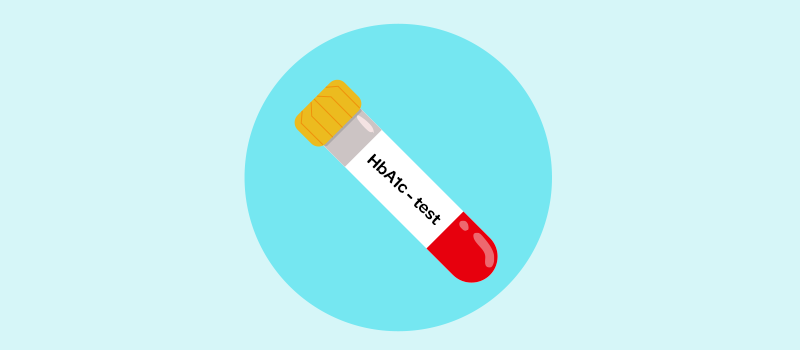What’s the Buzz
The Bee Healthy Blog
What is Insulin Resistance, and How is it Treated?

Long before a person is diagnosed with diabetes, silent changes start occurring in the body, which is both bad and good news. Bad news because it means something is going on and you don’t know about it. Good news because you have a chance to delay or prevent diabetes. One of the most important invisible changes before a person develops type 2 diabetes is insulin resistance.
Continue reading to learn more about insulin resistance, including what it is, who is at risk, how it is diagnosed, and what you can do to reverse it.
What is insulin?
Insulin is a hormone made by the pancreas. It is a key regulator of blood glucose (sugar) levels in the body. In healthy individuals, food is broken down into blood sugar, which enters the bloodstream. This is a signal for the pancreas to release insulin into the blood.
Insulin helps glucose go from the blood into the cells so they can use it for energy. Therefore, insulin lowers blood glucose and keeps it in the normal range. This hormone also tells the liver to store glucose for later use. When the glucose leaves the blood, blood sugar levels come down. This is a signal for the pancreas to decrease insulin. If a person doesn’t eat for a while, they have low blood sugar levels, which signals to the liver to release stored glucose.
This is a finely tuned system of glucose metabolism that works smoothly in healthy people. But if a lot of sugar enters the blood, the pancreas responds by releasing more insulin. The higher insulin level tells the liver to store glucose. When the liver cells are full, the glucose gets stored in fat tissue, leading to weight gain.
Over time, the cells in the body stop responding to insulin, and “insulin resistance” develops. As a result, the pancreas can’t make enough insulin, and blood sugar levels rise. High blood glucose levels are very damaging to many organs in the body. This sets the stage for prediabetes and type 2 diabetes.
What is insulin resistance?
Insulin resistance is a condition in which the body cannot use insulin hormones well. The liver, fat, and muscle cells don’t respond to the hormone. As a result, glucose is not easily taken up from the blood into the cells. As long as the pancreas makes more insulin and enough circulating insulin, blood sugar levels stay in the normal range. Once the pancreas cannot make enough to maintain blood insulin levels, blood sugar rises, and glucose is stored in muscle and fat cells.
What is prediabetes?
Prediabetes is a condition in which blood sugar levels are high but not enough to be called diabetes. It usually occurs in people who have developed insulin resistance and the pancreas is not making enough insulin to control blood glucose levels. Some 84 million Americans have prediabetes—that is 1 out of every 3 adults.
What is the main cause of insulin resistance?
Researchers do not entirely understand what causes the cells in the body to become insulin resistant. However, they think excess weight and lack of physical activity are key factors.
Abdominal obesity (belly fat) is believed to be the main factor that causes insulin resistance. In men, a waist size over 40 inches, and in women, a waist size over 35 inches has been linked to insulin resistance. This is the case even if the body mass index (BMI) is normal.
A second and equally important factor in developing insulin resistance syndrome is not getting enough exercise. Regular physical activity is important because it allows the body to keep blood glucose in check.
What are the symptoms of insulin resistance?
Many people with insulin resistance and prediabetes do not have any symptoms. However, some people may have symptoms like increased thirst, increased hunger, and frequent urination. Others develop skin tags or darkened areas called acanthosis nigricans on the neck and in the armpits. There may already be early organ damage with changes in the eyes called retinopathy.
Who is at risk of developing insulin resistance?
According to the American Diabetes Association (ADA) and the National Institute of Diabetes and Digestive and Kidney Diseases (NIDDKD), genetic and lifestyle risk factors can cause insulin resistance or worsen insulin resistance. Risk factors for insulin resistance include:
Non-modifiable risk factors (what you can’t change)
- Age 45 or older
- Family history of diabetes in a first-degree relative
- Ethnicity (the risk is higher in Asian Americans, African Americans, Hispanic/Latino, American Indians, Pacific Islanders, and Alaska Natives)
Modifiable risk factors (what you can change)
- Being overweight or obese
- Lack of exercise
- High blood pressure
- Abnormal cholesterol levels
Other risk factors in developing insulin resistance
- History of heart disease, cardiovascular disease, or stroke
- History of gestational diabetes (diabetes during pregnancy)
- Polycystic ovary syndrome (PCOS), a condition associated with abnormal ovarian hormone production
- Metabolic syndrome (high blood pressure, abnormal cholesterol levels, and large waist size)
- Sleep disorders like sleep apnea
- Hormonal disorders like acromegaly or Cushing’s syndrome
- Certain medications like glucocorticoids, some HIV drugs, certain antipsychotics
You should receive proactive diabetes care and be tested for prediabetes if you have one or more risk factors. Even in the absence of risk factors, you should be tested after age 45. If the results are normal, you should have repeat testing for prediabetes every 3 years.
How do I know if I have insulin resistance?
There is no single test that can tell you that you have insulin resistance. Doctors do not check blood sugar levels routinely, so prediabetes often remains undetected. However, if you have metabolic syndrome (high blood pressure, abnormal cholesterol levels, and large waist size), your doctor may determine that you are insulin resistant.
How do doctors diagnose insulin resistance?
The test for insulin resistance is complicated and is used mostly in research labs. Doctors diagnose prediabetes based on blood tests.
Blood glucose levels
The most common tests doctors order to diagnose prediabetes are fasting blood glucose level or fasting plasma glucose (FPG) and hemoglobin A1c. The FPG shows your blood glucose level at the time of the test. The A1c shows your average blood glucose over the past 3 months. You will be diagnosed with prediabetes if your fasting plasma glucose is 100-125 mg/dL or your hemoglobin A1C is 5.7-6.4%.
Oral glucose tolerance test
This is a more expensive and more difficult test to perform, but it is more sensitive than hemoglobin A1c. It checks how your body handles glucose after a meal. An oral glucose tolerance test may detect prediabetes before your fasting plasma glucose levels become abnormal. It is also used to test for gestational diabetes. An oral glucose tolerance test result of 140-199 mg/dL is indicative of prediabetes.
People with prediabetes have a 25% chance of progressing to type 2 diabetes in 3-5 years and a 50% chance of developing diabetes in 5-10 years.
Can you reverse insulin resistance?
Weight loss, achieved through a healthy lifestyle, including a healthy diet and regular physical activity, is key to reducing insulin resistance. This can help in delaying or preventing the development of type 2 diabetes.
How do you treat insulin resistance?
The Diabetes Prevention Program, funded by the National Institutes of Health, showed that losing 5-7% of body weight can reduce the risk of developing diabetes in high-risk individuals. This translates to a weight loss of 10-14 pounds in a person who weighs 200 pounds.
What is the best treatment for insulin resistance?
Lifestyle changes are your best bet to reverse insulin resistance. A healthy diet and regular exercise will lower your chances of developing insulin resistance, prediabetes, and type 2 diabetes.
A reasonably safe medication called metformin that is used to treat diabetes may be useful in people with insulin resistance and prediabetes. Meaning it might delay diabetes in such individuals. Metformin is most effective as an insulin resistance treatment in younger adults, obese adults, and women with gestational diabetes. If you have been diagnosed with prediabetes, ask your doctor if metformin is right for you.
References:











SOCIAL